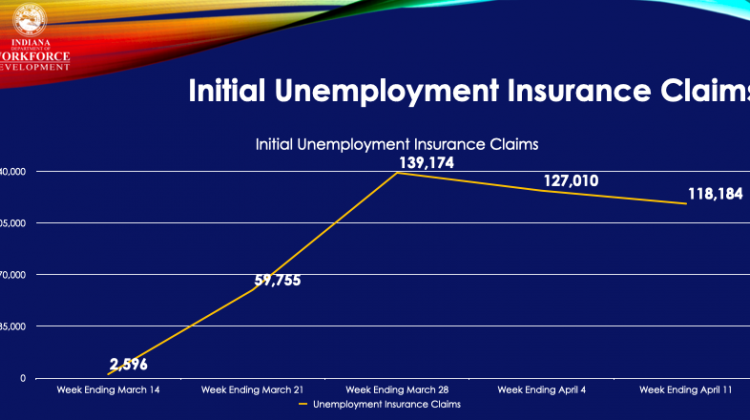
A slide from a Department of Workforce Development Powerpoint shows how unemployment insurance claims skyrocketed the week after data was collected to calculate the unemployment rate.
Courtesy DWDMonthly numbers released Friday show Indiana’s March unemployment rate went up only a tenth of a percent. That doesn’t reflect the almost half million Hoosiers who applied for unemployment assistance in the last month.
Just last week, more than 118,000 Hoosiers filed applications for unemployment benefits. That’s the second week those claim numbers have decreased since late March, but still dramatically higher than the 2,000 to 3,000 claims filed per week in all of February. The reason it doesn’t show up in March’s relatively low 3.2 percent unemployment rate has to do with how the information is collected.
Rachel Blakeman is the director of the Community Research Institute at Purdue University Fort Wayne. She says since the unemployment survey was conducted on March 12, it doesn’t capture the effects of the governor’s “Stay-At-Home” order a week later.
“We were starting to hear about COVID-19, but the hammer had not fallen on closing restaurants [or] on sheltering in place," she says. “What’s interesting is that it shows us how quickly things changed.”
However, Blakeman anticipates that April’s unemployment rate will reflect the drastic increases in layoffs and closures due to COVID-19.
 DONATE
DONATE







 Support WFYI. We can't do it without you.
Support WFYI. We can't do it without you.